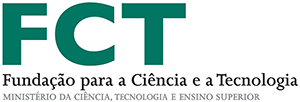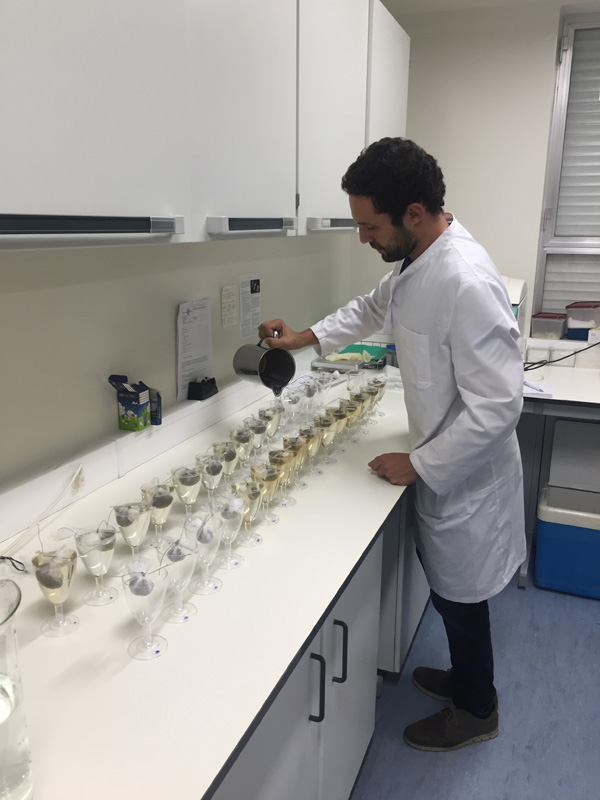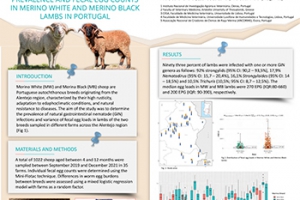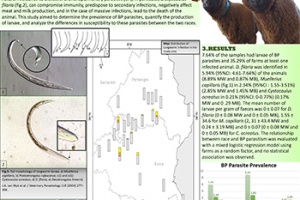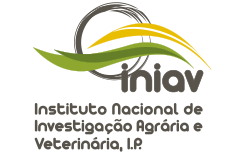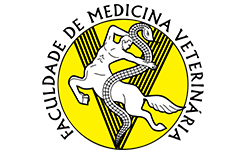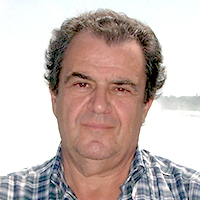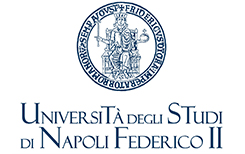About the project

The Merina Branca breed is the most representative autochthonous sheep breed in Portugal. The production of this breed provides quality products to consumers, helps maintaining the population in the less favoured areas of the country and is essential for the preservation of the environment and rural landscape. Internal parasites have a major impact on the sheep industry worldwide.
Treatment costs and production losses may rise due to the expected changes in the environment caused by global warming. Concerns over drug resistance and residues in animal products, residues in soil and restrictions to the use of synthetic dewormers in organic farms, require more sustainable parasite control options. Genetic improvement for resistance to parasites is a crucial strategy in Integrated Parasite Control. The identification of genetic markers of parasite resistance is expected to provide a high-throughput tool to select animals. This novel approach is still rarely used and was never explored in Portuguese sheep.
The primary objective of this project is therefore to identify genetic markers underlying genetic resistance to internal parasites that could be applied in the genetic improvement of the Merina Branca breed. This will be achieved using an innovative approach, based on the recently available Illumina OvineHD Beadchip technology, which allows analysing genetic variation at more than 600.000 SNP in the ovine genome simultaneously.
This project is further an ideal opportunity to study parasite species infecting the Merina Branca breed in different agroclimatic areas and to evaluate anthelmintic resistance of parasite species with major impact on sheep production.
Tasks
- Sample collection
- Diagnosis of Parasitosis
- Clinical Analysis
- Anthelmintic resistance
- Illumina HD Beadchip genotyping
- GWAS and post-GWAS studies
- Epidemiological data
- Communication of results
Field sample and data collection
Task 1
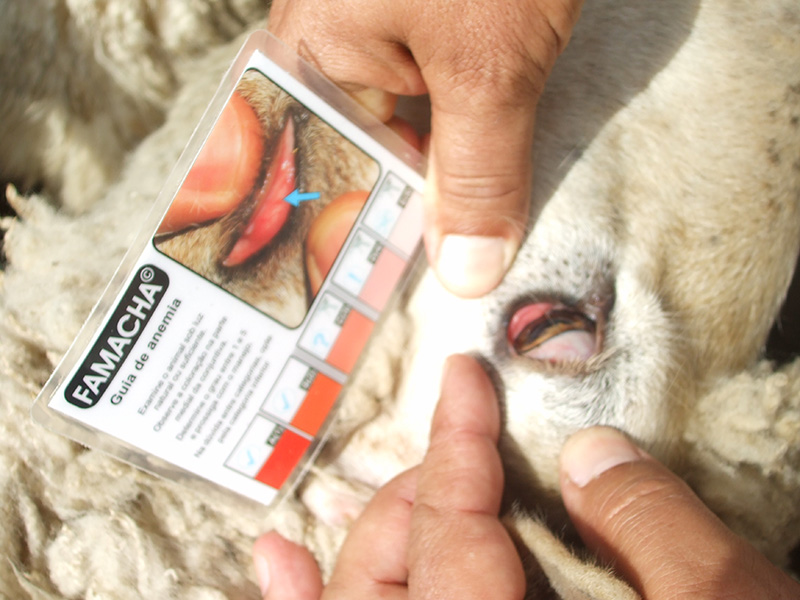
This task involves the collection of field samples and the collation of epidemiological data. A total of 35 farms and 30 animals per farm will be sampled, which will result in 1050 individual samples. Sampling will take into account the geographical distributions of the Merino sheep farms in Portugal, in order to maximize the probability of capturing spatial variation in parasite species distribution. Sampling will be performed during interventions carried out by ANCORME, to avoid additional stress to animals. A sample of approximately 15-20g of faeces will be collected from animals aged between 4 and 12 months into individual sample collection vials and stored refrigerated until processing. Blood samples will be collected by jugular venepuncture into vacutainer and K3EDTA vacuum tubes. All samples will be stored refrigerated until processing. Anemia will be assessed with the FAMACHA© score during sample collection. During farm visits, a questionnaire will be implemented in a direct interview with sheep breeders, in order to obtain important epidemiological information: individual and flock data (sex, age, flock size), management practices (production system, anthelmintics, deworming strategies) and farm productivity.
Institutions involved and members of the team in this task:
ANCORME
- Tiago Perloiro
- Ana Carrasco
- Rafael Silva
- Tiago Appleton
- Filipa Taniças
Expected outputs:
- Provide the necessary faecal and blood samples for the next tasks
- Collection of epidemiological data to estimate the prevalence, spatial distribution and risk factors of the different parasite species
- Ranking of animals according to FAMACHA© results and body weight (phenotypic resistance markers).
Qualitative and quantitative assessment of parasite species at farm level
Task 2
Sheep may be infected by several nematode, cestode and trematode species. These parasites infect different organs and tissues. The most pathogenic and widespread in Europe include the gastrointestinal parasites Haemonchus contortus and Teladorsagia circumcincta, the lungworm Dictyocaulus filaria and the liver fluke Fasciola hepatica. The diagnosis of internal parasites in faecal samples relies on different coprological methods, which are designed to detect specific life stages of these parasites. FEC is the most commonly used method to measure resistance/susceptibility to internal parasites within and between breeds of sheep. Animals with lower FEC are considered more resistant and substantial evidence shows that this trait is both repeatable and heritable.
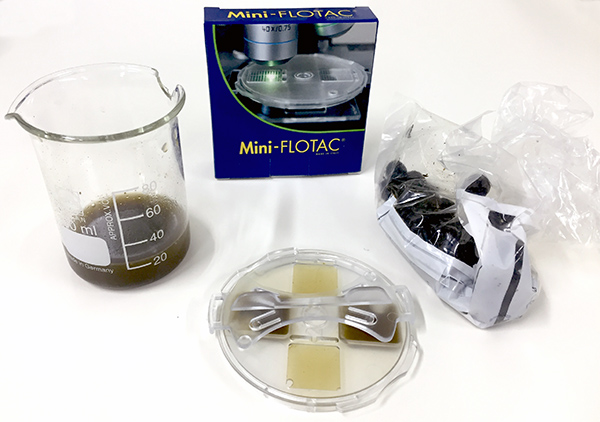
This task will encompass standard parasitological procedures, as well as serological and molecular methods, where applicable, to identify parasite species infecting the Merina Branca breed and quantify infections levels. The different methods will comprise: 1) the Baermann technique to detect lungworm larvae 2) sedimentation techniques and serology using commercial ELISA tests for the diagnosis of the liver fluke Fasciola hepatica and 3) the Mini-Flotac® technique to assess infection with gastrointestinal parasites and perform FEC to quantify infection levels. FEC will be used as an indicator trait of resistance. Additionally, faecal samples will be used to prepare coprocultures to allow the recovery and morphological identification of third stage larvae (L3). Gastrointestinal nematode eggs and larvae will be purified and submitted to DNA extraction and the parasite species confirmed by PCR using published primers. Parasitological, serological and molecular procedures will be performed at the parasitology laboratory, INIAV.
Institutions involved and members of the research team in this task:
INIAV
- Helga Waap
- Jacinto Gomes
- Ana Cristina Ferreira
- Pedro Vieira (aluno de MIMV)
- Ana Júlia Afonso
Università degli Studi di Napoli Federico II
- Prof. Dr. Laura Rinaldi
(Department of Veterinary Medicine and Animal Production)
Expected outputs:
- Identification of parasite species infecting different organic systems (respiratory, digestive and hepatic) of lambs
- Ranking of animals according to FEC results (phenotypic marker of resistance)
- Obtaining DNA from larvae/parasite eggs to determine anthelmintic resistance of parasites by pyrosquencing in subsequent tasks.
Assessment of hematological and biochemical resistance traits
Task 3

Previous studies have shown that internal parasites cause disturbances to the haemopoietic system and severe damage to the liver and abomasal mucosa, leading to anaemia, lower serum protein and higher hepatic enzyme activities. Several haematological and biochemical parameters have been proposed as indicator traits of resistance but combining various indicator traits may be the more efficient way to determine the resistance or susceptibility status of a particular breed.
In this task, blood samples collected in task 1 will be used to assess a panel of haematological and biochemical parameters which could be linked to resistance to parasites. Haematological parameters will include haemoglobin concentration, packed cell volume, total erythrocyte count, total and differential leucocyte counts, and biochemical parameters will include total serum protein, serum albumin, serum globulin, alkaline phosphatase, alanine amino transferase and aspartate amino transferase.
Institutions involved and members of the team in this task:
INIAV
FMV
- Maria Salomé Gonçalves
- Pâmela Valente
- Maria Alexandra Basso
Expected outputs:
- Ranking of animals according to haematological and biochemical parameters (phenotypic resistance markers).
Assessment of anthelminthic resistance
Task 4
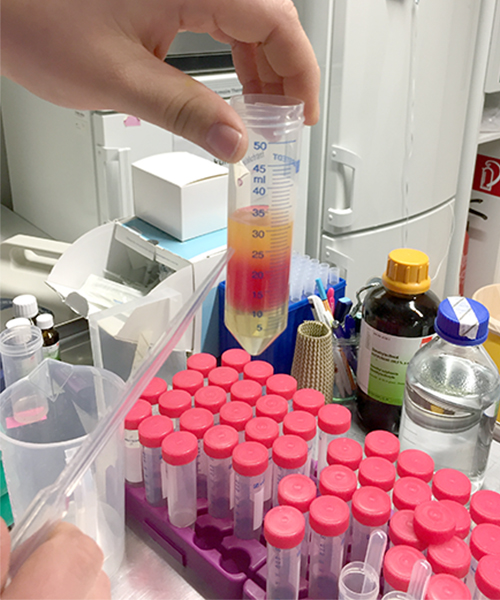
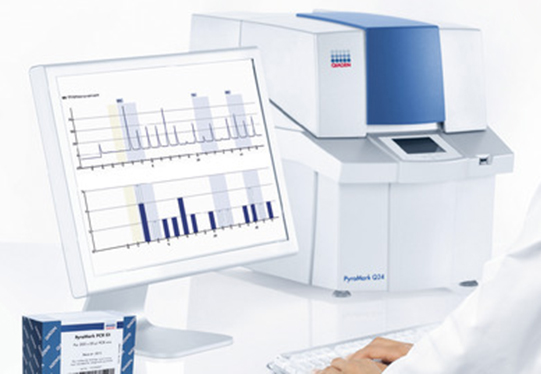
The intensive use of prophylactic mass treatments in the livestock industry has led to widespread resistance to all major groups of anthelmintics. Benzimidazoles (BZ) are among the most widely used anthelmintics. Although resistance to BZ is a globally recognized problem in ruminants, especially in sheep, no data are available for Portugal. BZ resistance in several gastrointestinal nematode species correlates with three SNPs in the isotype-1 beta-tubulin gene at codons F167Y, E198A and F200Y.
This project opens the possibility of surveying BZ resistance in two of the most pathogenic and prevalent gastrointestinal parasites in sheep in Europe, i.e., Haemonchus contortus and Teladorsagia circumcincta. Pyrosequencing assays for the quantitative analysis of the three SNPs are already available for these parasite species and will be employed in the present study. This task will use DNA extracted from from purified nematode egg and from larvae obtained in coprocultures.
Institutions involved and members of the team in this task:
INIAV
Freie Universität Berlin - Institut für Parasitologie und Tropenveterinärmedizin
- Prof. Dr. Georg von Samson-Himmelstjerna
Expected outputs:
- Determination of b-tubulin allele frequencies at codons 167, 198 and 200 in H. contortus and T. circumcincta.
DNA extraction and Illumina HD Beadchip genotyping
Task 5
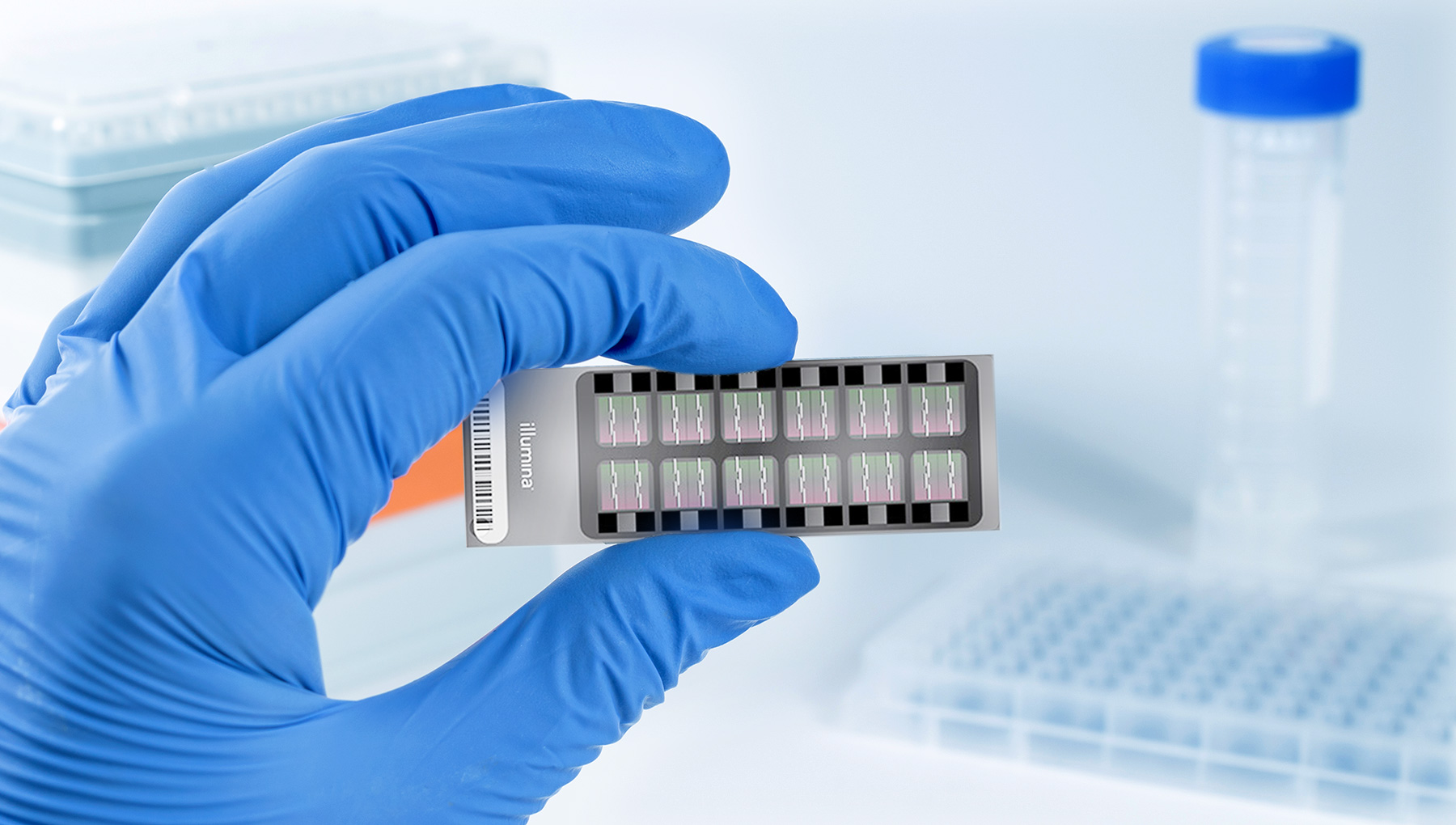
This task will comprise DNA extraction and selective genotyping of a subset of 400 lambs by llumina Ovine HD Beadchip. Animals will be selected based on the statistical analysis of relevant phenotypes ( FEC, FAMACHA©, body weight and hematological and biochemical parameters) to represent the extreme levels of resistance (high and low) to internal parasites.
Institutions involved and members of the team in this task:
INIAV
FMV
Expected results:
- Genotyping of 400 lambs for further GWAS and post-GWAS analysis.
Genome Wide Association Studies (GWAS) and Post GWAS analysis
Task 6

This task aims to identify genetic markers that are directly associated with phenotypic variation of resistance to parasites. Identification of genetic markers among the 600.000 SNPs of the Ovine HD BeadChip array will be based on described approaches using open-source whole genome association analysis toolsets. Parasite resistance traits will be analyzed using Genome-wide Efficient Mixed Model Analysis for Association Studies (GEMMA). To correct for population stratification, an analysis of variance will be performed, where gender, lambing season, birth rank (single, multiple) and age of dam will be fitted as fixed effects and age as a linear co-variable.
Post GWAS analysis will focus the search for genes close to the significant SNPs. Since most studies on sheep resistance to nematodes utilized microsatellite markers, the respective base pair positions will be searched for comparison with the positions found with Illumina Ovine HD Beadchip. In addition, the Bos taurus genome will be searched for homologies and genes at flanking regions of the SNPs of interest. With this information, biological pathways will be searched for each gene.
Institutions involved and members of the team in this task:
INIAV
Expected results:
- Identification of significant SNP markers correlated with phenotypic resistance traits
- Identification of candidate genes
- Identification of biological pathways involved in resistance
- Identification of tissue types expressing candidate genes
Analysis of epidemiological data
Task 7
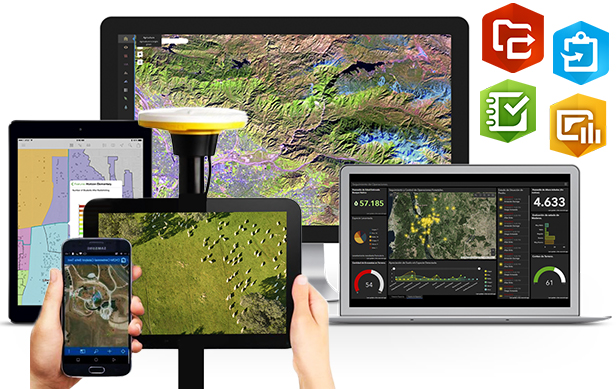 The pattern of infection and reinfection is a dynamic phenomenon that varies with geographic region, soil and climate conditions and the type of production and grazing system used. Parasitic diseases are ideal candidates to apply the latest geolocation technologies, since several parasite species are confined to specific regions, which are characterized by a range of environmental conditions. The knowledge about the epidemiology of parasites, in particular their prevalence, geographic distribution, risk factors at farm level and edaphoclimatic conditions, will allow the spatial modeling of risk zones for internal parasites and help to forecast the best time for the administration of antiparasitic drugs and/or altered management.
The pattern of infection and reinfection is a dynamic phenomenon that varies with geographic region, soil and climate conditions and the type of production and grazing system used. Parasitic diseases are ideal candidates to apply the latest geolocation technologies, since several parasite species are confined to specific regions, which are characterized by a range of environmental conditions. The knowledge about the epidemiology of parasites, in particular their prevalence, geographic distribution, risk factors at farm level and edaphoclimatic conditions, will allow the spatial modeling of risk zones for internal parasites and help to forecast the best time for the administration of antiparasitic drugs and/or altered management.
In this task, data will be organized in a specific database and analysed using univariate and multivariate techniques, correlation and logistic regression in order to identify risk factors associated with parasitic infection. Geographical data analysis techniques and remote sensed data will be employed, in order to identify environmental factors, which might influence the geographic distribution of the different parasite species. The output of climate-driven models of transmission potential of the main parasite taxa will be used as inputs into the spatial models, providing baseline risk maps.
Institutions involved and members of the team in this task:
INIAV
FMV
Expected results:
- Prevalence and geographical distribution of the different parasite species
- Identification of risk factors
- Models and predictive maps of the occurrence of internal parasitosis
Dissemination and communication of results
Task 8
This task will comprise the development, review and update of an annual dissemination and communication plan for the project activities and results, as well as the definition of the responsibilities of each project partner. The project has a wide range of target groups, where the most import groups are: Farmers, farmer producer’s organizations, associations of sheep breeders, veterinary practitioners and other professionals related to the animal production sector, industry, students (veterinary medicine and other areas related to animal production), general public.
The communication strategy will take into account the different needs for information of the various target groups. Communication tools will include physical and electronic dissemination materials.
Institutions involved and members of the research team in this task
ANCORME
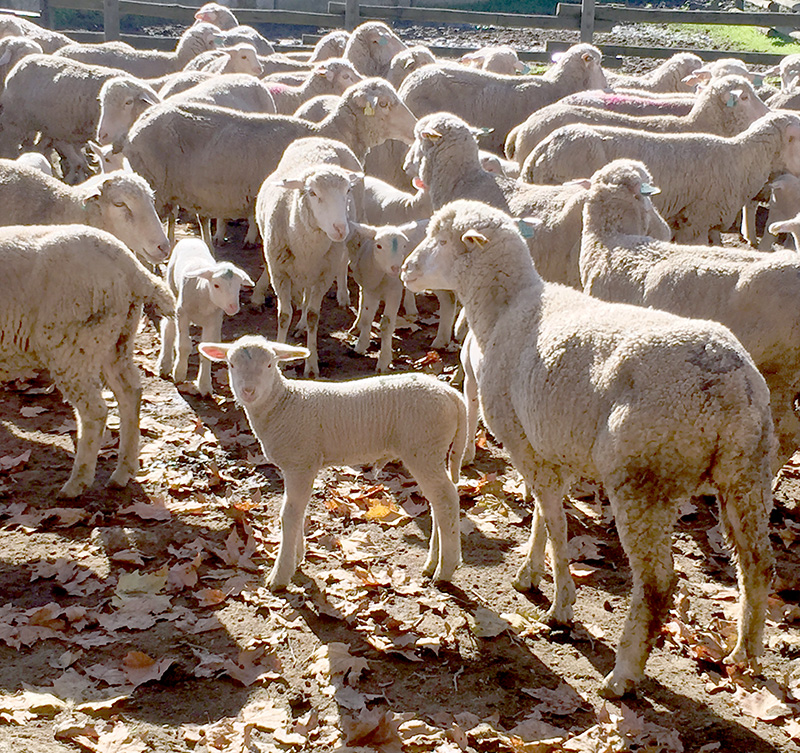
Expected results
This task will assure the communication of project activities and results to a broad audience, promoting the dialogue between the different target groups and scientific collaboration, thus contributing to the consolidation of the project and improvement of the quality of the research.
Dissemination and communication channels will comprise:
- Publication of results in open access international scientific journals.
- Publication of project background information, activities, aims and results in journals for the animal production sector.
- Publication of a Manual of Good Practices for the sustainable control of parasites in sheep farms, with special focus on genetic selection.
- Master and Phd thesis which will be made available online
- Organization/ participation in workshops for farmers.
- Presentations in national and international scientific meetings and conferences.
- Website on project activities and results.
Project News
Project team
External collaborations
Dictyocaulus filaria Larva
Gastrointestinal strongyle eggs with L1 larvae




